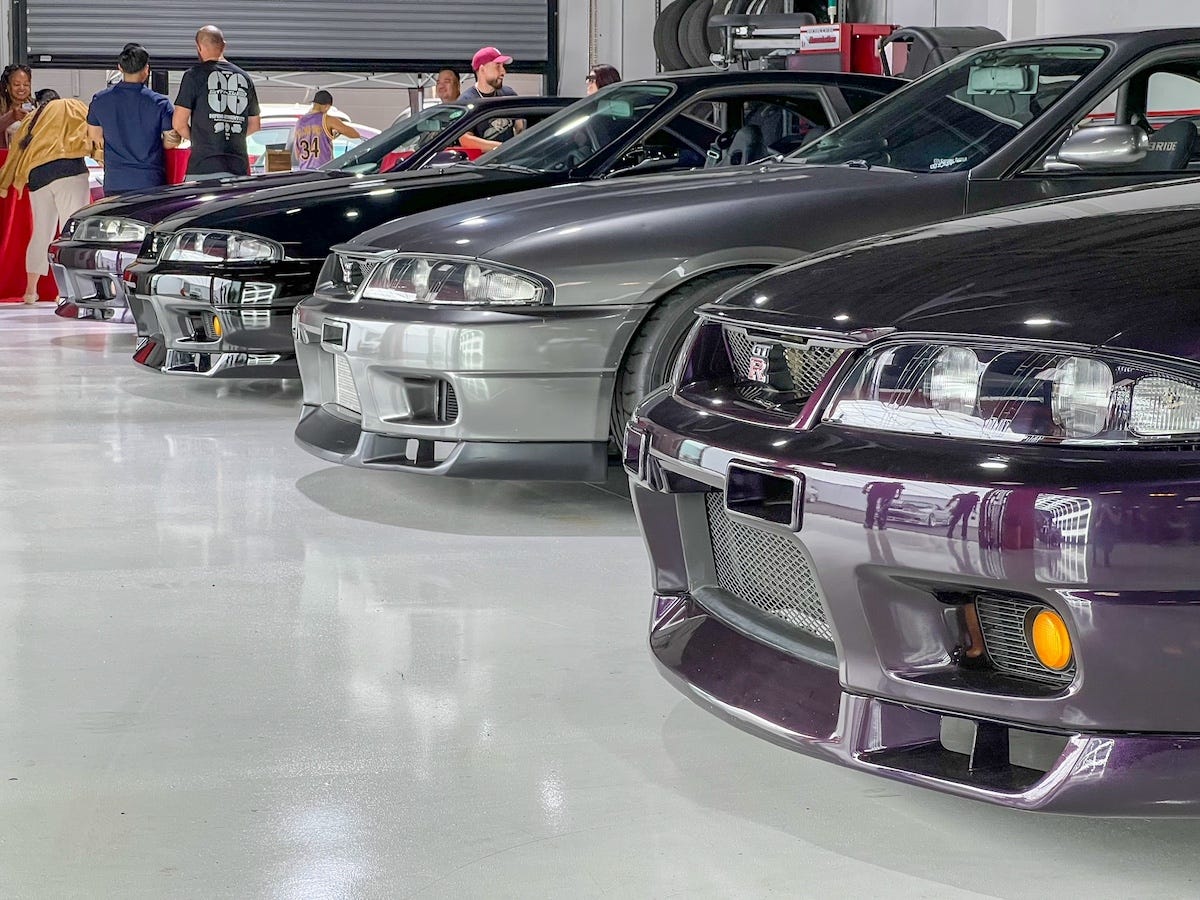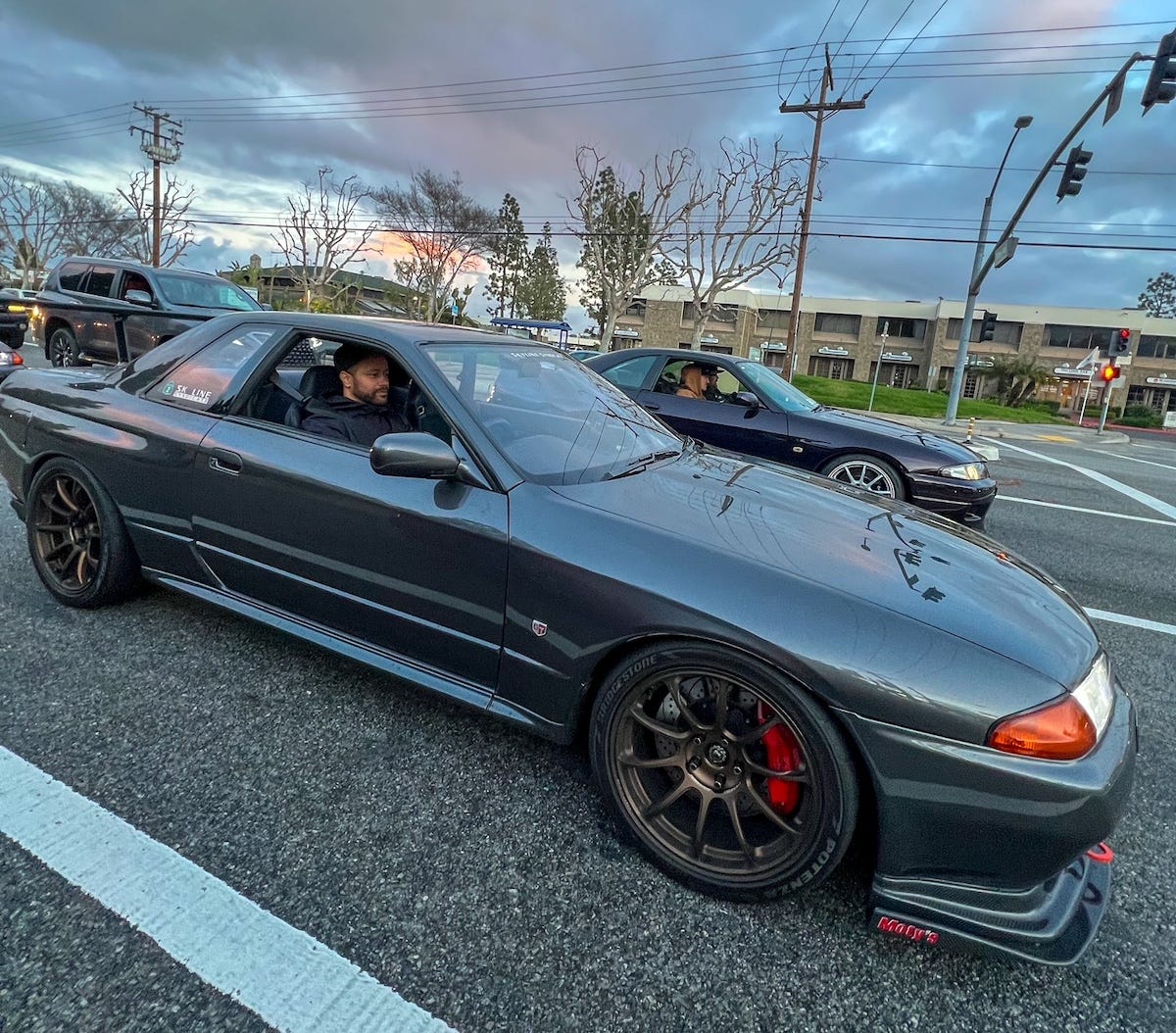
If you’re a regular Race Day reader, then by now you know a little bit about what the Nissan Skyline GT-R is, and what makes it special. But there are lots of special cars — what makes people go cuckoo for Cocoa Puffs about the GT-R?
Welcome to our weekly installment with excerpts from Cult of GT-R, my newest nonfiction book about the history and controversy of the Nissan Skyline GT-R, available now. Every Monday, I’ll post a short section from a different chapter, plus photos and commentary, to give you a taste of what’s in the book.
Check out our past excerpts above, and to buy Cult of GT-R, click here for my website or find it at your favorite online retailer. Enjoy!
Cult of GT-R: Chapter 5 Excerpt

BEING A GT-R OWNER doesn’t necessarily mean you’re rich. Plenty of folks of limited means have fought and scratched their way to a GT-R title. These people come from modest backgrounds, work regular jobs, and save for years to achieve their personal dream. They might store their pride and joy in the open car park of an apartment complex. They might fix it with their own tools. Their GT-R might be the only vehicle they own, driven to and from work in all four seasons. Several owners insisted to me that a friend, down on his luck, slept in his GT-R rather than sell it. Budget GT-R owners chase their dreams in their own way. But when hard times come, they get hit harder.
“You’ve definitely got to have a love for them,” Jesse Iwuji said. Iwuji, a NASCAR driver and team owner who owns an R32 GT-R and keeps an R34 GT-R stored in Japan, echoed advice others had shared with me before. Prospective buyers, he suggested, should make sure to have a large savings account, access to a vast array of replacement parts, or both.
The chief technician at one well known GT-R shop told me that he constantly sees evidence of shoddy work. The R32 in particular, being an older model, has had more time to be exposed to hands that don’t know what they’re doing. It’s common to see cracked oil pans because someone used an incorrect bolt and overtightened it—and new oil pans are costly. The R34 GT-R also has issues. Its digital display screen will sometimes malfunction, which can require double-checking, one at a time, all 114 of its wiring pins to fix.
Why would a person work for years to acquire an object needing more attention than they’re prepared to handle? Anyone who gets into the GT-R world simply to look cool on the Internet may soon realize they are in over their head. “Imagine someone who decides to have a kid,” Iwuji told me, “just to post baby pictures.”
To find the answer, it helps to look at how humans are themselves wired. In early 2020, researchers at the universities of Munich and Vienna published a study that found young people were more likely to pay attention to advertisements that depicted bright, unhealthy foods. Especially if those foods were prohibited at home.
“You have to understand that to them, this is normal.”
Of course it’s well understood that telling children they aren’t allowed to have something only makes them want it more. These researchers, however, wanted to know why. First, they showed junk food ads to a group of children who were allowed to eat candy at home. Those kids showed mild interest in media that showed other kids eating candy.
Next, the researchers showed ads to children who weren’t allowed to have candy. Those kids showed much, much more interest. When the prohibited foods came on-screen, the children became fixated. The chemicals in their brains shifted. Their pupils dilated. The researchers paired their findings with previous studies, and deter- mined that the subjects were experiencing something called “emotional arousal.” The response, they said, was an example of the forbidden-fruit effect, where being denied something only makes you want it more.

There was more. For one thing, the subjects were only somewhat interested when the candy was shown in still pictures. Yet when the same food was shown in television commercials, they went berserk. This, the study theorized, might be from something called incentive sensitization—a term typically used to describe drug addicts. Photographs kept a certain distance between the viewer and the candy. But seeing the ads in video form “leads to the impression of the availability of this specific food group,” the researchers wrote.
It turns out, seeing another person enjoy something you can’t have can make that object—that candy bar, that puppy, that JDM Nissan—seem more attainable in real life. Whether it was the Mine’s R34 dominating a Supra on the track, or Smokey Nagata ripping toward 200 mph on a British roadway, these and other glimpses of the GT-R culture in faraway lands became irresistible to many.
The key was the impression, whether real or imagined, of attainability. Even though you can’t have it now, you could have it one day. And look at how sweet that would be.
In the junk food example, the researchers wondered how this attachment, this dream-like fantasy world existing in their minds, would make the children act out in the world. “How this emotional arousal then translates into behavioral preference,” the study said, “has to be investigated further.”
But I can tell you something about emotional arousal. How it translated into the behavioral preferences of GT-R enthusiasts. How almost to a person, they explained that they grew up admiring the driving heroes they saw in videos, or read about in magazines. They idolized the people in Japan wrangling cutting-edge racecars to victory, sliding around mountain edges, or using high-speed antics to evade the law. It was all proof that the GT-R and its culture did, in fact, exist in the real world.
From there, playing video games and flipping through anime allowed these budding super-fans to put themselves in the story. Even though they couldn’t be part of the culture directly, they could absorb it from afar. They imagined a future with them in it, one where they could be welcomed and included. They thought about it incessantly. They created an ideal scenario in their minds—the perfect car, the perfect road, the perfect crew—until it all felt real. And nothing would stop them from making it real.
Even as they moved through the world around them, they were working toward a different world—one that their peers couldn’t see. One way or another, their story was always going to end with the outcome they envisioned. They prepared themselves for the day when they would have the chance to put down a deposit, figure out the shipping process, and park a Skyline GT-R in their garage. Almost by any means necessary. “You have to understand,” one anonymous importer told me, “that to them, this is normal.”
All they needed was an in.
About This Chapter
This was a pivotal chapter in investigating the GT-R craze. First, it helped me understand that once some people been exposed to its culture, and are told they can’t have it, they’re almost helpless to stop the desire. They quite literally become intoxicated.
And second, it helped me understand how they shift their own personal realities to make room for the car. They might make a career change, or forgo life events. Some GT-R owners build their entire lives around the possibility—nay, the inevitability—that they will one day bring one home.
That’s dedication. Or obsession. Whatever you want to call it. But those two points illustrated to me what separates the Skyline GT-R from other cars with passionate fanbases. It’s not just the machinery. It’s that people chase the siren song, and will follow it to its deepest depths if necessary. Happy and willing.
Check out Carrara Media on Instagram, Twitter and Facebook and visit our store to order one of our many fine books and eBooks.






